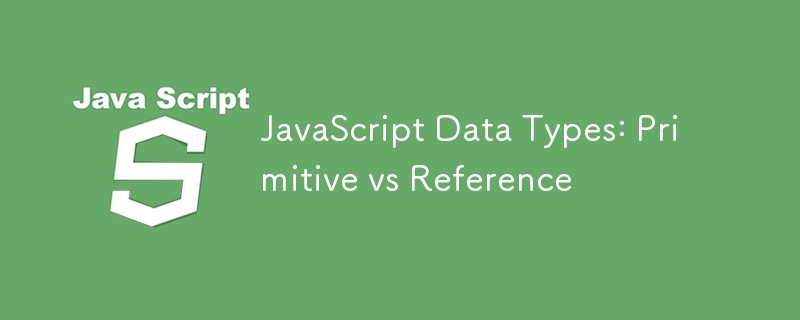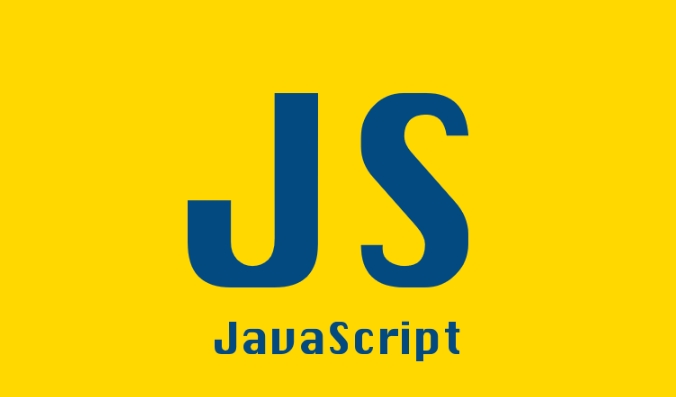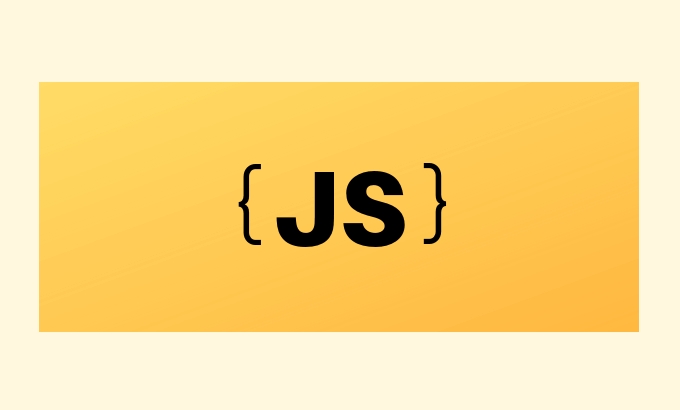JavaScript Data Types: Primitive vs Reference
Jul 13, 2025 am 02:43 AMJavaScript's data types are divided into primitive types and reference types. Primitive types include string, number, boolean, null, undefined, and symbol. The values are immutable and copy copies when assigned, so they do not affect each other; reference types such as objects, arrays and functions store memory addresses, and variables pointing to the same object will affect each other. Typeof and instanceof can be used to determine types, but pay attention to the historical problem of typeof null. Understanding these two types of differences can help write more stable and reliable code.

JavaScript data types are divided into two categories: Primitive and Reference. Understanding the difference between them is critical to writing more stable and predictable code.

Primitive types are immutable values
There are six primitive data types in JavaScript: string , number , boolean , null , undefined , and symbol (new in ES6). These types of values are immutable, which means that you cannot change an original value itself, you can only replace it with a new value.
for example:

let name = "Tom"; name.toUpperCase(); // Returns "TOM", but name itself is still "Tom"
This means that the operation of the original type will not modify the original value, but will return a new value. When you assign a primitive type to another variable, you actually copy the copy of this value:
let a = 10; let b = a; b = 20; console.log(a); // Still 10
Therefore, the assignment and operation of the original type are independent and do not affect each other.

The reference type points to the memory address
Reference types mainly include objects (Object), arrays (Array) and functions (Function). They store "references" to a location in memory, not the actual data itself.
See an example:
let obj1 = { name: "Alice" };
let obj2 = obj1;
obj2.name = "Bob";
console.log(obj1.name); // Output Bob Here obj2 does not copy obj1 's content, but points to the same memory address. Therefore, modifying the attributes of obj2 will also affect obj1 .
The same situation will also occur when the function passes arguments:
function changeName(user) {
user.name = "Changed";
}
let person = { name: "Original" };
changeName(person);
console.log(person.name); // Output ChangedBecause what is passed in is a reference to the object, modifications to the object inside the function will affect the outside.
Tips for judging types
To determine whether a variable is a primitive type or a reference type, you can use typeof and instanceof :
-
typeofrecognizes most primitive types (exceptnullwill return"object") -
instanceofis used to determine the specific constructor of reference type
For example:
typeof 42; // "number"
typeof "hello"; // "string"
typeof true; // "boolean"
typeof null; // "object" (this is a historical issue with JS)
typeof {}; // "object"
typeof function(){}; // "function" (special reference type) If you want to accurately judge null , you can use === null to handle it separately.
Basically that's it. Understanding the difference between primitive types and reference types can help you avoid many unexpected problems, especially when dealing with complex structures or function parameter passing.
The above is the detailed content of JavaScript Data Types: Primitive vs Reference. For more information, please follow other related articles on the PHP Chinese website!

Hot AI Tools

Undress AI Tool
Undress images for free

Undresser.AI Undress
AI-powered app for creating realistic nude photos

AI Clothes Remover
Online AI tool for removing clothes from photos.

Clothoff.io
AI clothes remover

Video Face Swap
Swap faces in any video effortlessly with our completely free AI face swap tool!

Hot Article

Hot Tools

Notepad++7.3.1
Easy-to-use and free code editor

SublimeText3 Chinese version
Chinese version, very easy to use

Zend Studio 13.0.1
Powerful PHP integrated development environment

Dreamweaver CS6
Visual web development tools

SublimeText3 Mac version
God-level code editing software (SublimeText3)

Hot Topics
 Using std::chrono in C
Jul 15, 2025 am 01:30 AM
Using std::chrono in C
Jul 15, 2025 am 01:30 AM
std::chrono is used in C to process time, including obtaining the current time, measuring execution time, operation time point and duration, and formatting analysis time. 1. Use std::chrono::system_clock::now() to obtain the current time, which can be converted into a readable string, but the system clock may not be monotonous; 2. Use std::chrono::steady_clock to measure the execution time to ensure monotony, and convert it into milliseconds, seconds and other units through duration_cast; 3. Time point (time_point) and duration (duration) can be interoperable, but attention should be paid to unit compatibility and clock epoch (epoch)
 How does PHP handle Environment Variables?
Jul 14, 2025 am 03:01 AM
How does PHP handle Environment Variables?
Jul 14, 2025 am 03:01 AM
ToaccessenvironmentvariablesinPHP,usegetenv()orthe$_ENVsuperglobal.1.getenv('VAR_NAME')retrievesaspecificvariable.2.$_ENV['VAR_NAME']accessesvariablesifvariables_orderinphp.iniincludes"E".SetvariablesviaCLIwithVAR=valuephpscript.php,inApach
 How does a HashMap work internally in Java?
Jul 15, 2025 am 03:10 AM
How does a HashMap work internally in Java?
Jul 15, 2025 am 03:10 AM
HashMap implements key-value pair storage through hash tables in Java, and its core lies in quickly positioning data locations. 1. First use the hashCode() method of the key to generate a hash value and convert it into an array index through bit operations; 2. Different objects may generate the same hash value, resulting in conflicts. At this time, the node is mounted in the form of a linked list. After JDK8, the linked list is too long (default length 8) and it will be converted to a red and black tree to improve efficiency; 3. When using a custom class as a key, the equals() and hashCode() methods must be rewritten; 4. HashMap dynamically expands capacity. When the number of elements exceeds the capacity and multiplies by the load factor (default 0.75), expand and rehash; 5. HashMap is not thread-safe, and Concu should be used in multithreaded
 Why We Comment: A PHP Guide
Jul 15, 2025 am 02:48 AM
Why We Comment: A PHP Guide
Jul 15, 2025 am 02:48 AM
PHPhasthreecommentstyles://,#forsingle-lineand/.../formulti-line.Usecommentstoexplainwhycodeexists,notwhatitdoes.MarkTODO/FIXMEitemsanddisablecodetemporarilyduringdebugging.Avoidover-commentingsimplelogic.Writeconcise,grammaticallycorrectcommentsandu
 PHP prepared statement with IN clause
Jul 14, 2025 am 02:56 AM
PHP prepared statement with IN clause
Jul 14, 2025 am 02:56 AM
When using PHP preprocessing statements to execute queries with IN clauses, 1. Dynamically generate placeholders according to the length of the array; 2. When using PDO, you can directly pass in the array, and use array_values to ensure continuous indexes; 3. When using mysqli, you need to construct type strings and bind parameters, pay attention to the way of expanding the array and version compatibility; 4. Avoid splicing SQL, processing empty arrays, and ensuring data types match. The specific method is: first use implode and array_fill to generate placeholders, and then bind parameters according to the extended characteristics to safely execute IN queries.
 how to avoid undefined index error in PHP
Jul 14, 2025 am 02:51 AM
how to avoid undefined index error in PHP
Jul 14, 2025 am 02:51 AM
There are three key ways to avoid the "undefinedindex" error: First, use isset() to check whether the array key exists and ensure that the value is not null, which is suitable for most common scenarios; second, use array_key_exists() to only determine whether the key exists, which is suitable for situations where the key does not exist and the value is null; finally, use the empty merge operator?? (PHP7) to concisely set the default value, which is recommended for modern PHP projects, and pay attention to the spelling of form field names, use extract() carefully, and check the array is not empty before traversing to further avoid risks.
 PHP check if a string starts with a specific string
Jul 14, 2025 am 02:44 AM
PHP check if a string starts with a specific string
Jul 14, 2025 am 02:44 AM
In PHP, you can use a variety of methods to determine whether a string starts with a specific string: 1. Use strncmp() to compare the first n characters. If 0 is returned, the beginning matches and is not case sensitive; 2. Use strpos() to check whether the substring position is 0, which is case sensitive. Stripos() can be used instead to achieve case insensitive; 3. You can encapsulate the startsWith() or str_starts_with() function to improve reusability; in addition, it is necessary to note that empty strings return true by default, encoding compatibility and performance differences, strncmp() is usually more efficient.
 What is a BiConsumer in Java?
Jul 14, 2025 am 02:54 AM
What is a BiConsumer in Java?
Jul 14, 2025 am 02:54 AM
BiConsumer is a functional interface in Java that handles operations that do not return results. It belongs to the java.util.function package and is suitable for scenarios where two data are required to operate at the same time, such as key-value pairs that traverse Map. A common usage is to iterate with Map's forEach method. Unlike other functional interfaces such as Consumer and BiFunction, BiConsumer does not generate a return value. The implementation methods include lambda expressions, method references and anonymous classes. When using them, you need to pay attention to the order of type parameters, non-returnable values, and exception handling.






